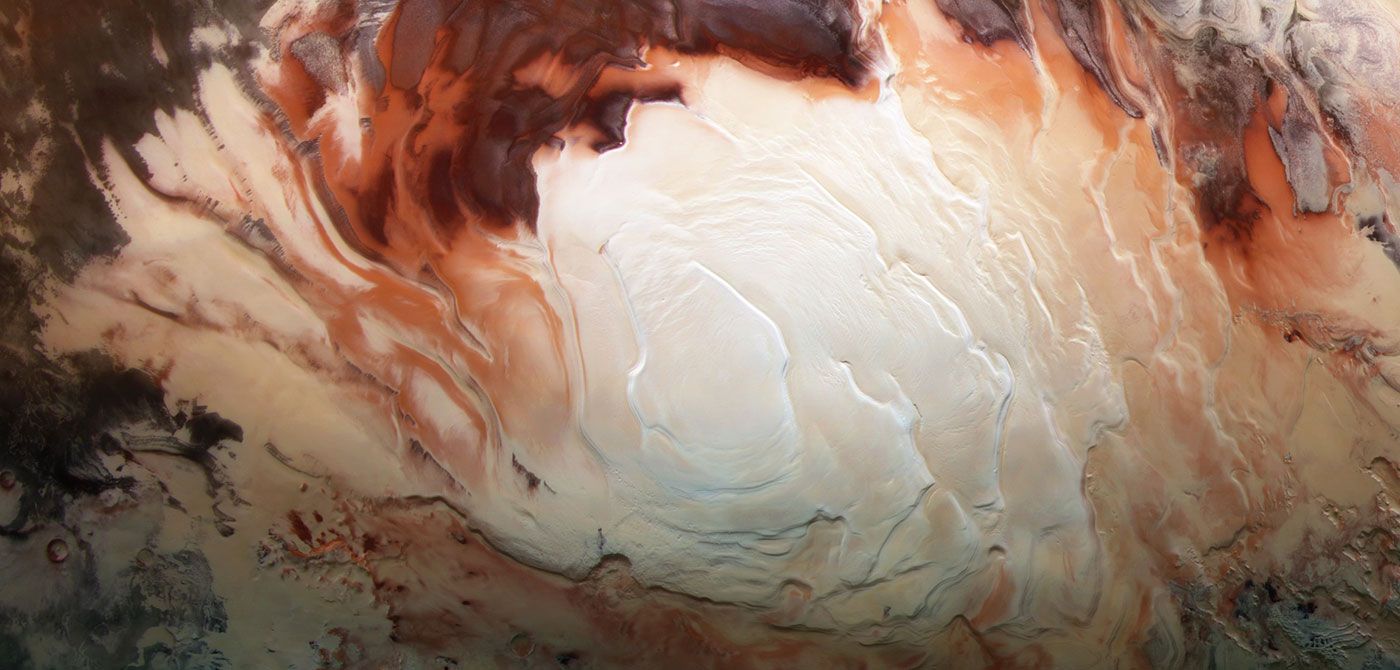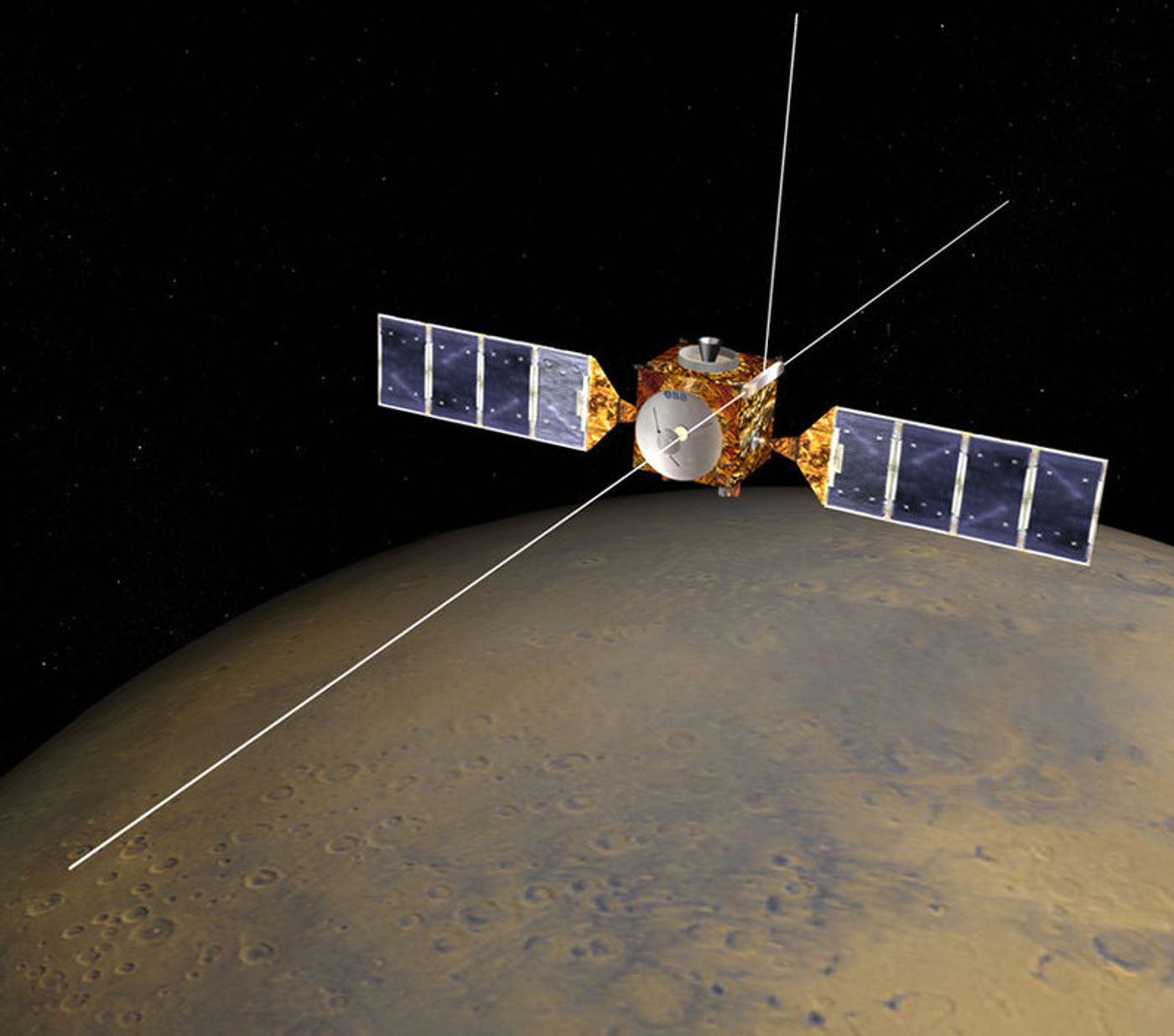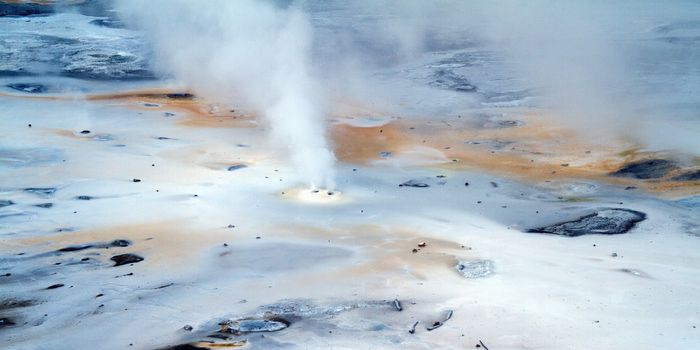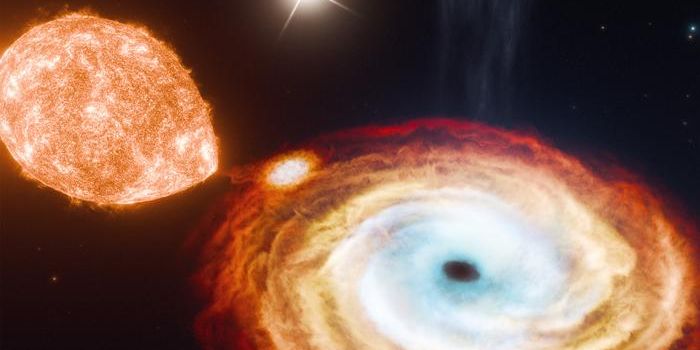Mars Groundwater Prospects Dry Up
The planet Mars has always been known as a bone-dry world, incapable of possessing liquid water on its surface. This is primarily due to the lack of atmospheric pressure necessary to keep water in its liquid form, as Mars exhibits a ground level atmosphere pressure 0.6% of Earth’s. This long-standing theory of why there was a lack of liquid water on Mars had cold water thrown on it when a 2018 study published in Science revealed the possible existence of groundwater beneath the south pole of Mars when scientists saw bright radar reflections underneath the polar cap.
But the purpose of science is to keep asking questions and challenging hypotheses. A new study in the journal Geophysical Research Letters found that the radar reflections actually matched those of volcanic plains found all over the surface of Mars.
"For water to be sustained this close to the surface, you need both a very salty environment and a strong, locally generated heat source, but that doesn't match what we know of this region," said Dr. Cyril Grima, a planetary scientist at the University of Texas Institute for Geophysics (UTIG), and lead author of the study.
For the study, Dr. Gima added an imaginary ice sheet across a radar map of Mars, which essentially caused the previous south pole findings of liquid water to blend in with the rest of the map. This revealed how the terrain of Mars would look through a mile of ice, which allowed scientists to compare features across the entire planet with those previous findings under the south polar cap.
The study was based on three years of data from the Mars Advanced Radar for Subsurface and Ionosphere Sounding (MARSIS) instrument aboard the European Space Agency’s Mars Express, which was launched in June 2003 and inserted into Mars orbit that December. Dr. Grima and co-author Dr. Jérémie Mouginot, a research scientist at the Institute of Environmental Geosciences in Grenoble, France, are continuing to work on proposed missions to find water on Mars using radar, both to aid future astronauts on the red planet as well as find signs of past life.










